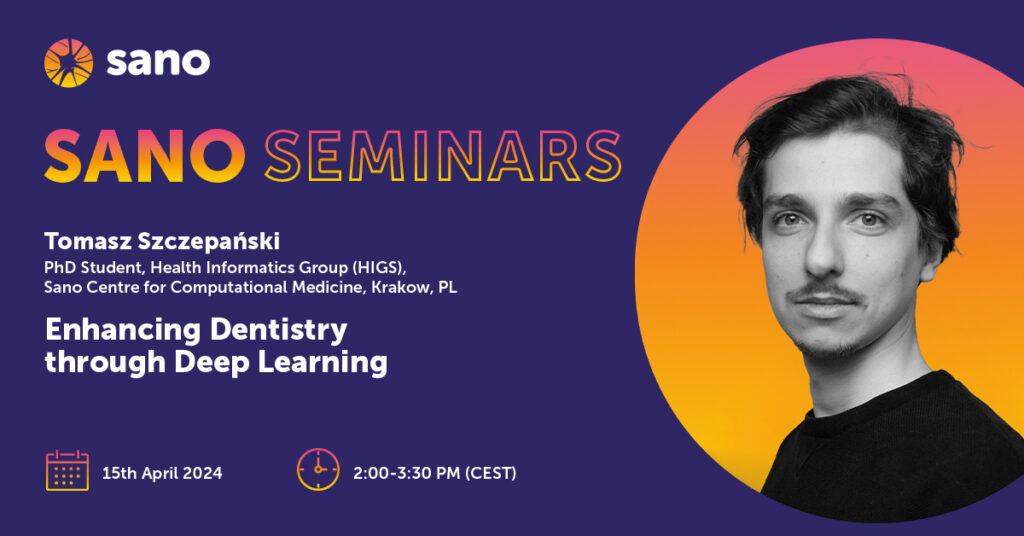129. Enhancing dentistry through deep learning
Tomasz Szczepański - PhD Student, Health Informatics, Sano Centre for Computational Medicine, Krakow PL
Abstract
Automated tooth segmentation is crucial for computer-assisted treatment planning. Manual segmentation is time-consuming and requires specialized software, making automatic methods highly desirable. Precise segmentation allows for quantitative measurements, aiding decision-making.
It is challenging due to the variation in inherent tooth morphology, presence of metal artifacts, and significant variability of image quality of CBCT scans.
The existing tooth segmentation methods employ multi-stage frameworks [1], addressing GPU memory constraints using a top-down approach from low to high resolution. However, this approach necessitates training multiple models and selecting various hyperparameters, hindering generalization to new data. Additionally, existing methods often overlook anatomical geometry [2] or focus solely on tooth adjacency [3]. This approach only partially uses the rich information on tooth morphology corresponding to each tooth type.
In this research, we integrate the statistical shape of normal dentition into the loss function to enhance generalizability, going beyond tooth adjacency. Utilizing a multitask decoder, the proposed approach simultaneously segments and classifies teeth. Extensive experiments on a multicentre external dataset demonstrate its superior performance compared to several state-of-the-art methods.
The ongoing work focuses on understanding the segmentation model’s feature representation to improve the robustness and generalization of the model to new unknown data from different distributions.
[1] Cui, Z., Fang, Y., Mei, L., Zhang, B., Yu, B., Liu, J., … & Shen, D. (2022). A fully automatic AI system for tooth and alveolar bone segmentation from cone-beam CT images. Nature communications, 13(1), 2096.
[2] Li, P., Liu, Y., Cui, Z., Yang, F., Zhao, Y., Lian, C., & Gao, C. (2022). Semantic graph attention with explicit anatomical association modeling for tooth segmentation from CBCT images. IEEE Transactions on Medical Imaging, 41(11), 3116-3127.
[3] Chen, Y., Du, H., Yun, Z., Yang, S., Dai, Z., Zhong, L., … & Yang, W. (2020). Automatic segmentation of individual tooth in dental CBCT images from tooth surface map by a multi-task FCN. IEEE Access, 8, 97296-97309.
About the author
Tomasz Szczepański obtained a Master of Science degree with distinction in Computer Science from Warsaw University of Technology (WUT) in 2022. His thesis focused on the problem of data bias in chest X-rays of patients with COVID-19, where he showed that the basis for the deep learning model decision may not correlate with disease manifestations. He also holds a degree in Photonics Engineering from WUT, where in his bachelor’s in engineering thesis, he worked on computer vision and augmented reality techniques. He gained practical experience as a software engineer at Curious Element startup and The Centre for Innovation and Technology Transfer Management of WUT. He joined Sano in May 2022 and focuses on medical image segmentation using deep learning methods, which plays an important role in medical treatment planning.

